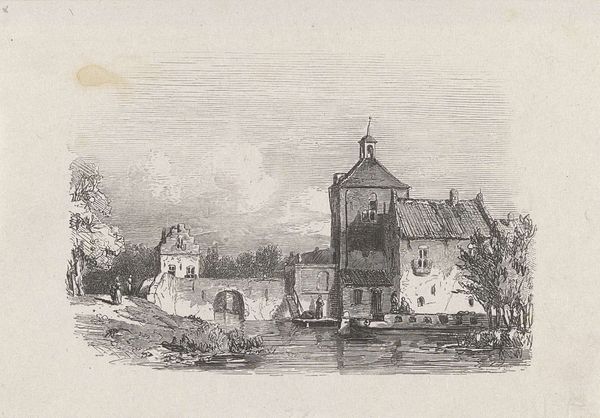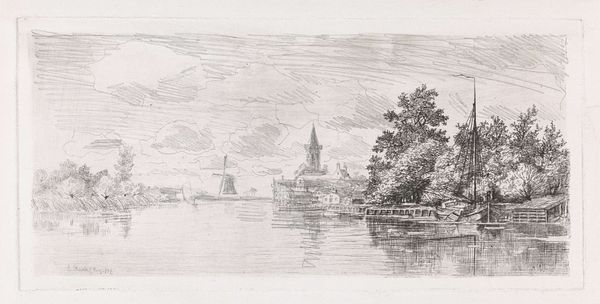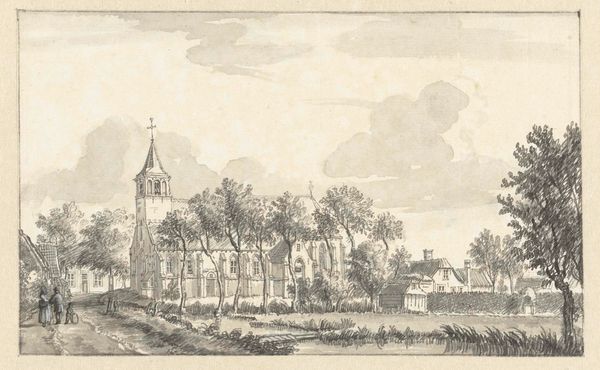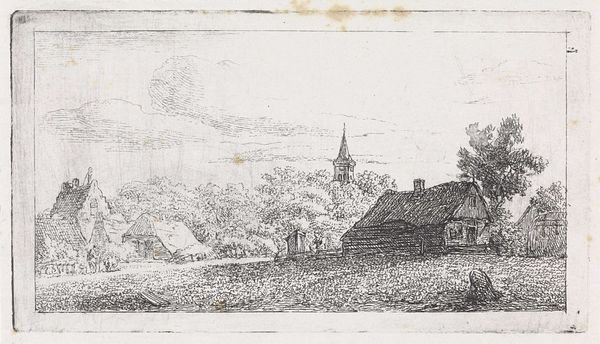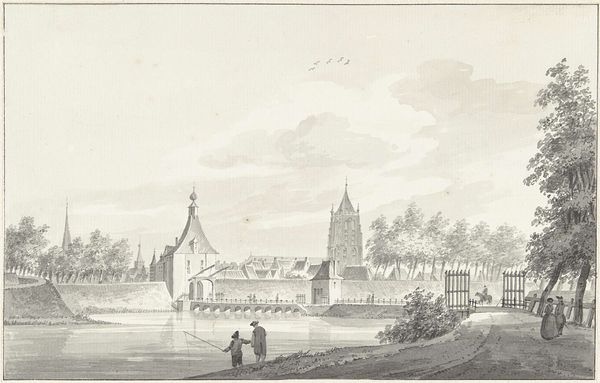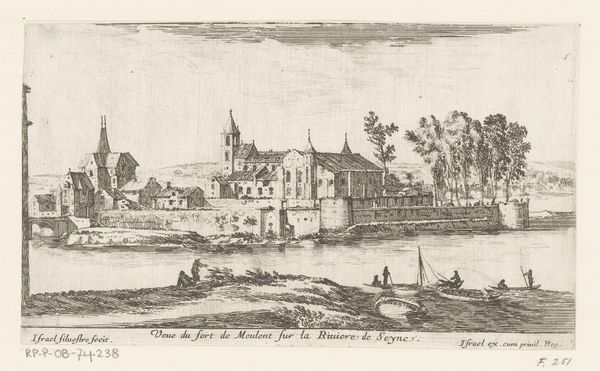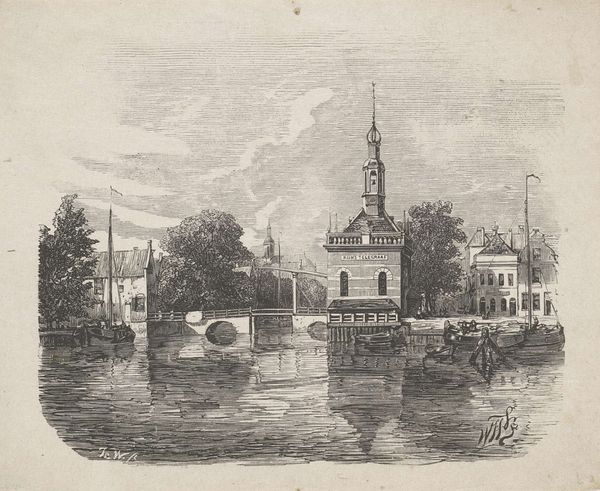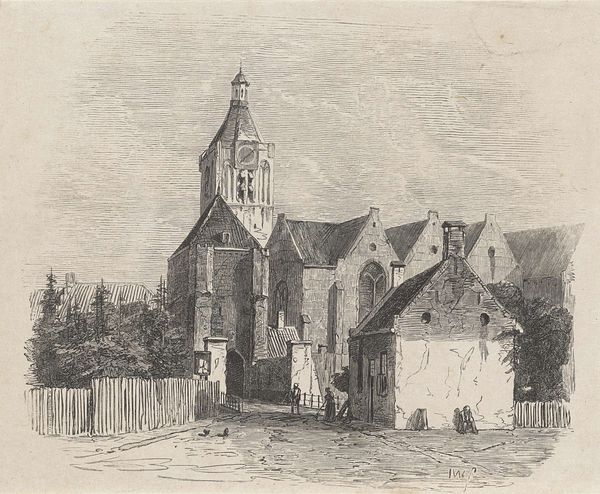
etching
#
dutch-golden-age
#
etching
#
landscape
#
etching
#
cityscape
Dimensions: height 108 mm, width 153 mm
Copyright: Rijks Museum: Open Domain
Curator: What a tranquil scene! There’s a lovely calm to this small print, isn't there? Editor: Absolutely, there’s a real stillness. The way the etched lines define the clouds and water… it’s incredibly delicate. Shall we give our listeners a bit of context? This is “Gezicht op Overschie,” or "View of Overschie", an etching by Isaac Weissenbruch. It likely dates between 1836 and 1912, and is now held at the Rijksmuseum. Curator: Thanks! Looking at the print, it really showcases Weissenbruch’s mastery of the etching technique. He wasn't merely recording the view, he was interested in texture. Consider how the roofs seem roughly layered. You can see his command of the needle on the copper plate, the control needed to achieve that level of detail and variation in tone. And the paper! Finding the right paper, with its particular weight and absorbency, was vital for receiving the ink and delivering the image Weissenbruch envisioned. Editor: Indeed. I also think about what Overschie might have represented at the time. We're viewing a specific locality, a nexus of people and stories. In what ways did the local residents relate to these images? Considering who would have had access to art like this helps uncover complex relationships within Dutch society and visual culture of that era. What narratives does it exclude or amplify through its selective depiction? Curator: It brings up interesting points about who controls visibility, and that can certainly be considered in relation to a landscape piece like this one. Editor: Absolutely. I look at the buildings—they're solid but humble, suggesting labor, perhaps the daily toil needed to run a small village. A community supported by agriculture and trade along this waterway, relying on a collective knowledge passed down through generations. Weissenbruch’s technique of etching brings attention to the textures and physical presence of the buildings, offering us more to consider, which is useful for a discourse around access and knowledge. Curator: Definitely. These physical connections become extremely important. To pull it all together, examining Weissenbruch's process – the materiality of the plate, the inking, the printing – offers invaluable insights, it deepens our understanding. Editor: Precisely. That understanding is, for me, inherently social and political, making even the quietest landscapes reverberate with the echoes of broader histories and struggles. Curator: What a remarkable journey – from material analysis to profound contextual understanding. Thanks for shedding new light on this print, I have something new to ponder. Editor: And thank you; I now see this landscape as a physical record embedded within history.
Comments
No comments
Be the first to comment and join the conversation on the ultimate creative platform.
